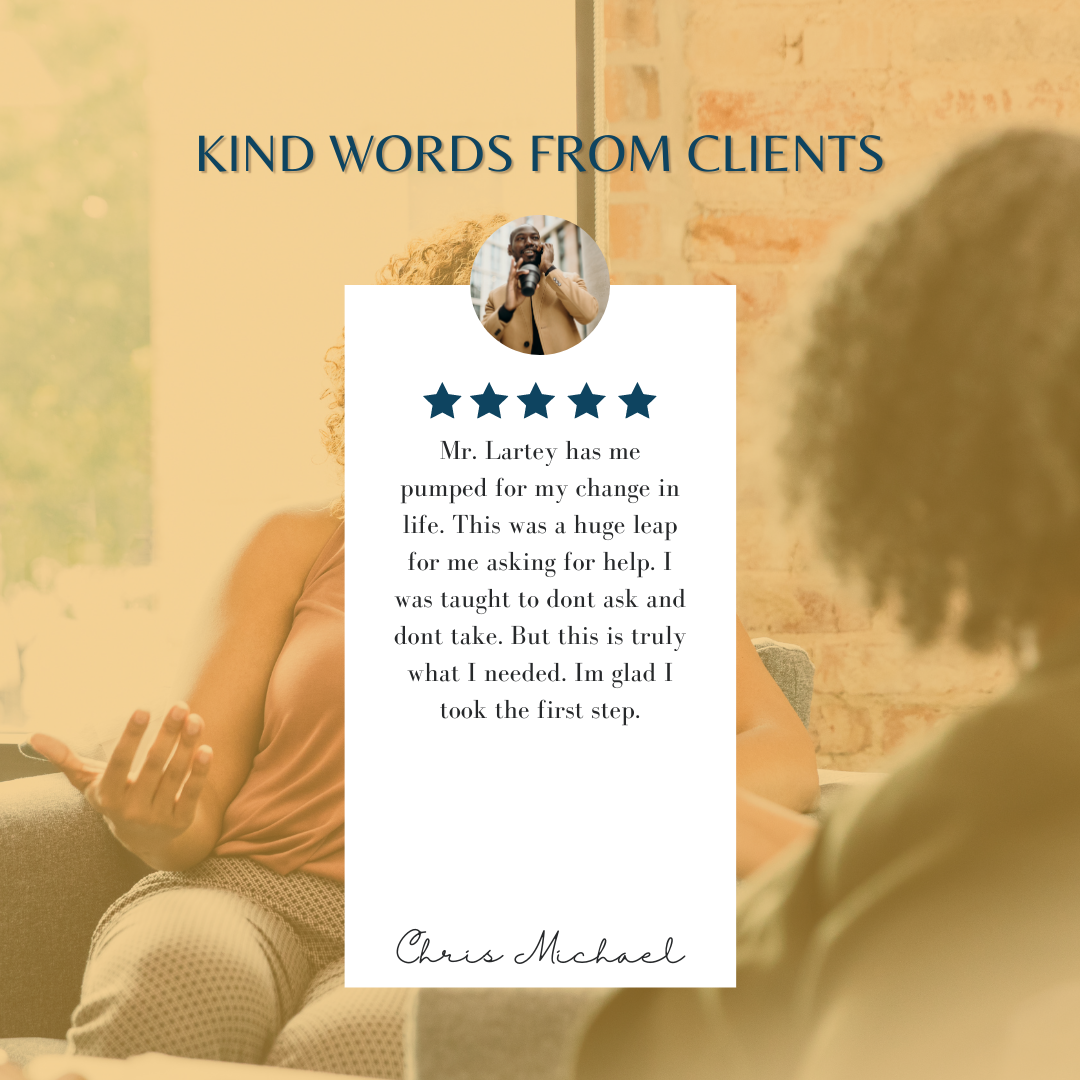Why I gave up $200,000 to start my own business.
/Late last year, I was in a dilemma. Give up a six-figure contract and start my own business or keep a good work opportunity and lose something I had taken years to build.
A little background story.
I have been a practicing therapist/counselor for close to a decade. With my experience and success in the mental health field, I started the Lartey Wellness Group. What started as a small group of therapists grew to become a 50+ member organization with a very efficient administrative and marketing team. The systems I put in place at the beginning of the organization were so good and efficient that we had an overflow of client traffic. Our staff was almost always fully booked.
The success I found in this venture rewarded me in the form of finally being able to take time off from full-time counseling. This was necessary because after years of full-time counseling and building the Lartey Wellness Group I was burnt out and in need of rest. I also needed a new job that wasn’t related to mental health to keep food on the table.
This came in the form of a six-figure IT consulting contract which I was more than qualified for. Not quite what I had in mind, but better of course! A previous project manager I had worked with recommended me and I was awarded the contract. I finally had time to rest and also a highly-paid job doing something I was good at to keep me active. The benefits were not only monetary, as I now had more time to keep a close eye on the administrative and marketing side of the Lartey Wellness Group. I fine-tuned an already efficient system and the results were just overwhelming. We now had a backlog of clients who needed our services and no one to attend to them.
It then dawned on me, why don’t I start a marketing agency? I am good at building stuff. I already built a system that is so efficient that we were unable to keep up with the demand. What is stopping me from giving out the overflow to struggling therapists and mental health agencies? I clearly remembered when I first entered the Mental Health field with no one to hold my hand, doing everything to make sure I could have enough clients to keep the lights on and pay the bills. If I’d had a similar system then, I would have immediately said yes.
So what was stopping me from doing that now? Well, it turned out to be a six-figure contract that had kept me happy and fulfilled ever since I took a break from counseling.
The Dilemma
So what was I going to do now? give up the good contract or lose something I had built through blood, sweat, and tears? After weeks of meditation and reflection, I picked the former. I wanted my own thing, I wanted to be remembered as someone who persevered to build a legacy.
After the decision was made, I talked to my project manager about what I decided. He was very supportive and understanding. He allowed me to hire a second person to make my transition smoother. I wrapped everything up, handed over, and bowed out into the unforgiving unknown.
I now had to build everything from scratch, well not exactly because I already had systems in place to make sure therapy clients were always pouring in. The other half that remained was finding the therapists and agencies to whom we were going to provide the lead generation services.
So I did what I did best, recruiting the right people, from experienced cold callers to digital marketing specialists. I built a team that was going to ensure this new venture succeeds.
The Journey So Far
This is how far we are on this journey to build a system that helps Mental Health professionals rest assured knowing they can take breaks and that whenever they are ready, there will be leads waiting for them at the Lartey Wellness Group.
Follow or journey on Youtube: https://www.youtube.com/@larteywellnessgroup852
Subscribe to our newsletter to get new updates and mental health tips.











